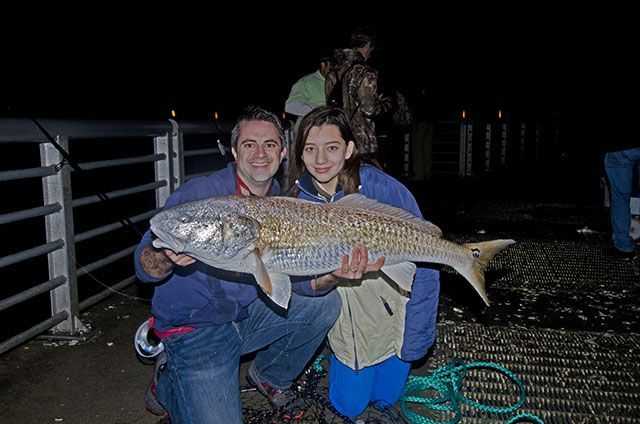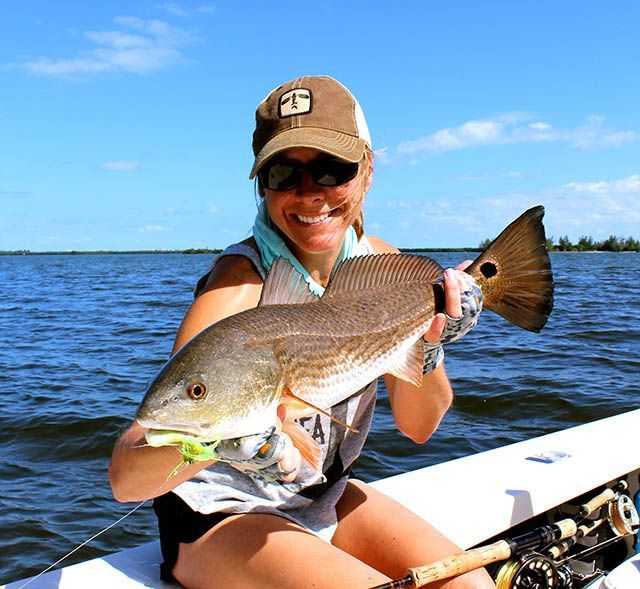
By: Zack Jud, Ph.D.
[dropcap]W[/dropcap]hat’s your favorite fish? A pretty easy question, right? But think about it for a second – you’re invariably going to come up with a list rather than a single species. I guess a better question is what do you value most in a fish? Table quality? The fight? It’s smarts (or lack thereof)? The exotic locales it calls home? Its ecological importance? Going one step further, what kind of credentials does a fish need to carry to qualify as a “gamefish”?
Twice in a week, I’ve been confronted with the “what’s a gamefish” conundrum. While poling a local mangrove shoreline a few days ago, my fishing buddy started giving me a hard time when she found out that I didn’t share her admiration for trout. Now I’m not a trout hater, but I’ll admit they’re pretty low on my target list. Not long after our trout discussion, I laughed to myself as I watched my partner (an adamant catch-and-release angler) curse under her breath at the solid ladyfish that had just mangled her fly. Why was the ladyfish – which put on a more heroic performance than all but the largest trout – relegated to the bottom of the gamefish pyramid? We weren’t fishing for dinner, so table quality wasn’t an issue. In terms of the take and the fight, our ladyfish was a hands-down winner over the 12-inch trout that came to the boat a few casts later. So why the negative stigma? The angler who spends $10,000 to catch giant trevally on Christmas Island, but scoffs at the 40-pound jacks that patrol our beaches this time of year, needs to ask himself the same question. Just where do we draw the line between gamefish and lame fish?
Then, the “gamefish vs. lame fish” argument made its second appearance of the week. This time, it was a little more complicated than pitting trout against ladyfish. While fishing Fort Pierce inlet’s south jetty, a fellow angler told me about the good luck he’d been having since snook season opened. When I asked about the tarpon bite, he grumbled something about hating those #&!$% fish because they straightened his hooks and stole his jigs. How can a fish so valued by so many be considered a nuisance fish to others? Tarpon were this guy’s ladyfish. Sadly, I’ve seen the same mindset play out over and over again on jetties and catwalks throughout the region. Massive redfish and snook – too big to take home for dinner – unceremoniously kicked back into the water. Disgusting, and the antithesis of sportsmanship. While a slot red or snook holds a certain “gamefish” appeal, how do you explain an even larger trophy-sized specimen getting “released” with the same regard as a pile of seaweed or an old boot?
As ethical and conservation-minded anglers, I urge all of you to reconsider the value you place on non-target species. Regardless of your personal definition of “gamefish”, it’s time to start treating every fish you catch with some respect. No more rough handling or intentionally spiteful releases (you know exactly what I’m talking about!) just because a fish isn’t on your favorites list or is the wrong size to take home. Use proper catch and release practices on bonefish and burrfish alike. If you encounter an angler throwing puffers or catfish back into the bushes, consider saying something. The next time you see an overslot red flopping around on the ground, step in and offer to help release the fish properly. Lead by example – you might just change the way someone else handles their fish. Remember – the fish you kick back with disdain may be a trophy to the kid next door, food for the snook you covet, a mature female loaded with eggs, or an important part of the nearshore ecosystem.
Zack Jud, Ph.D., is the Director of Education at Florida Oceanographic Society. He is a coastal ecologist (researching tarpon, snook, bonefish, permit, and lionfish), a marine science educator, and a fly casting and fly tying instructor. Zack can be reached at zjud@floridaocean.org.
